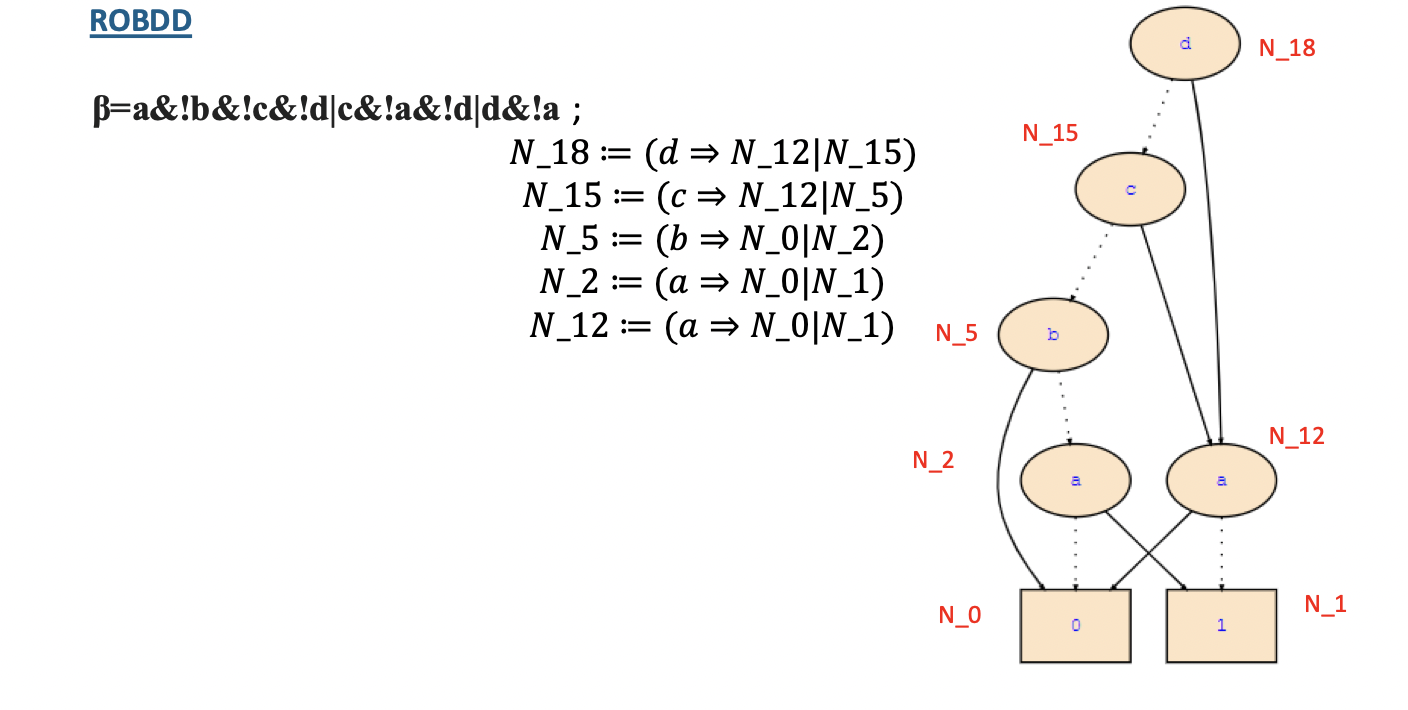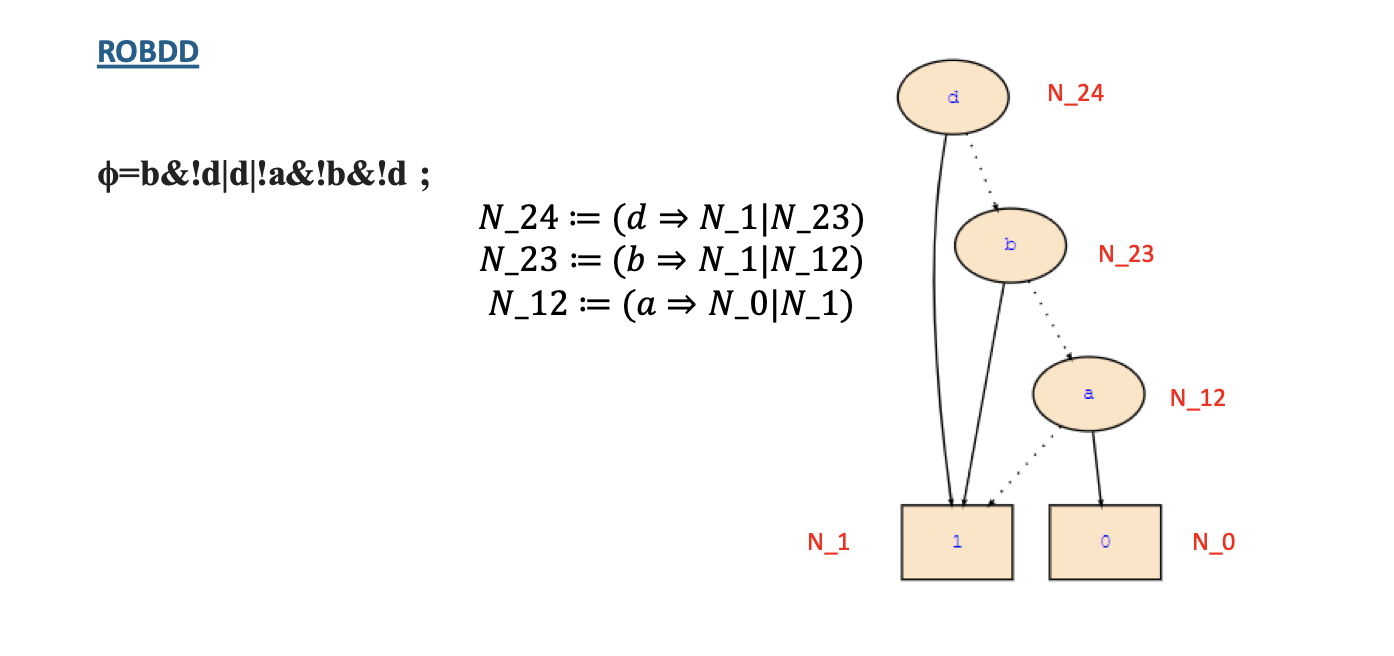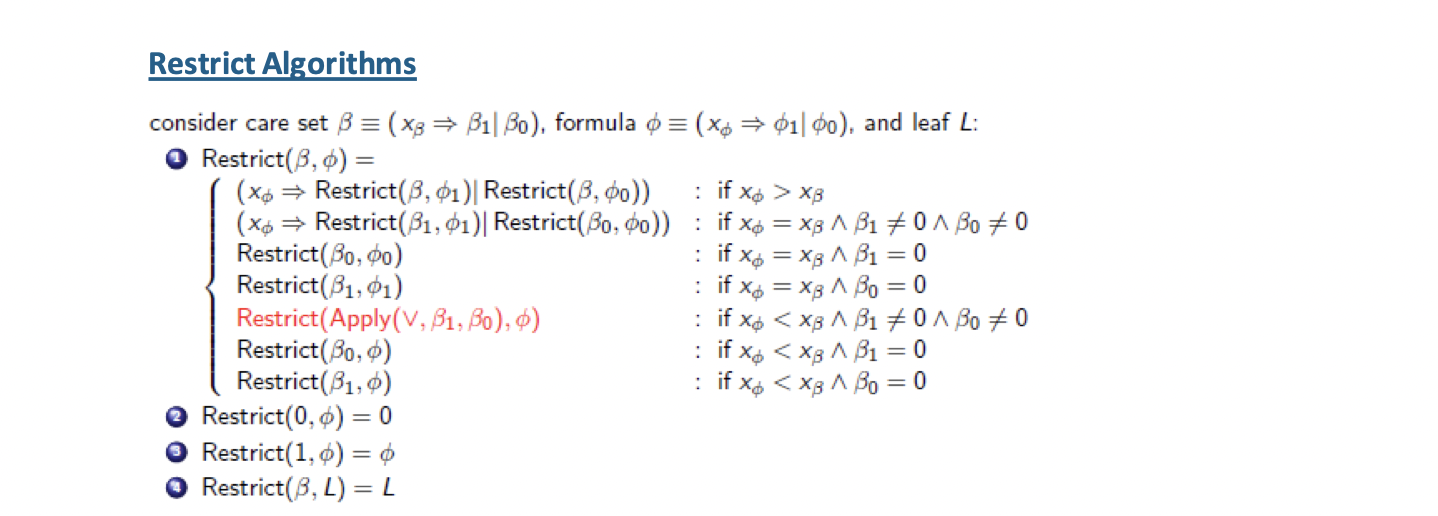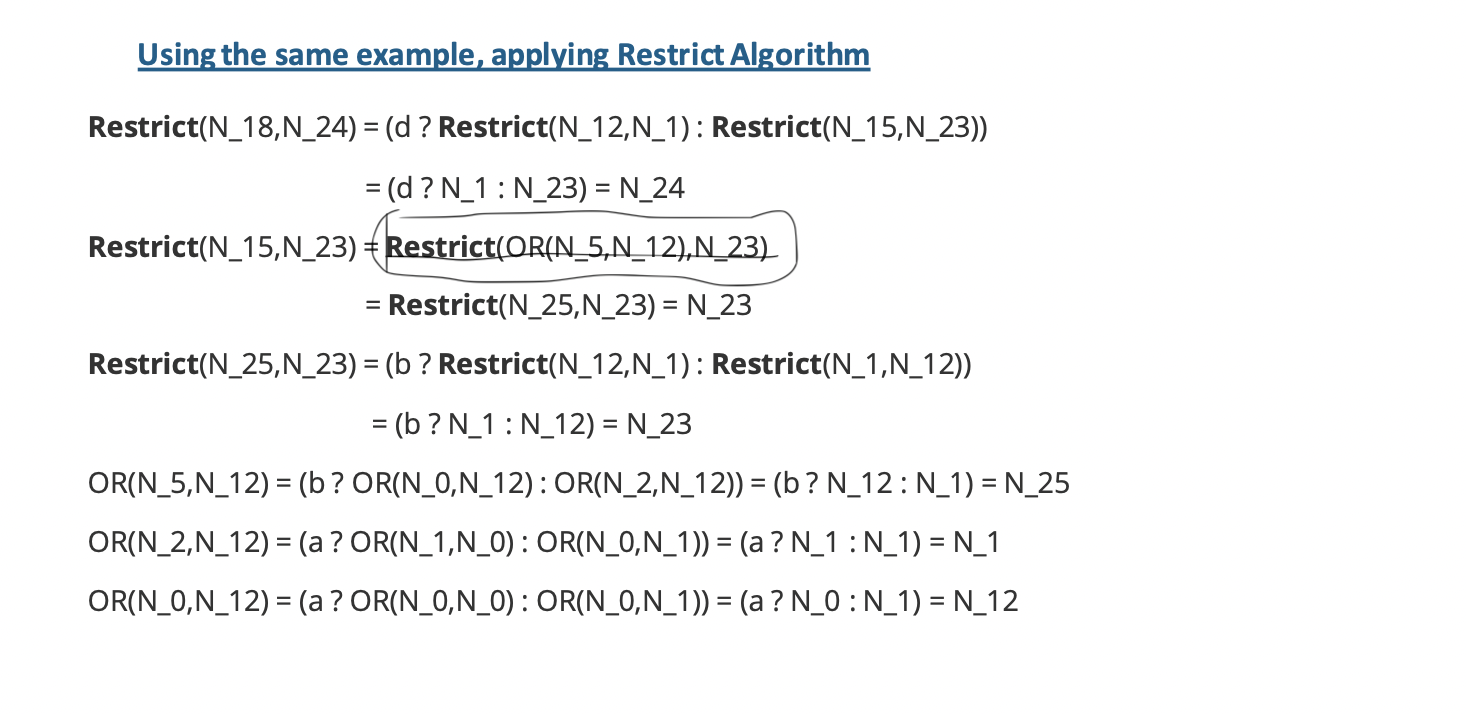Hi, I was going through the Restrict Algorithm. I am bit confused about the rules taken below. As per the Restrict Algorithm : Restrict(Apply(∨, β1 , β0 ), φ) ifD(xφ)<D(xβ)∧ β0,β1!=BDD(0),
β1is the positive cofactor and β0 is the negative cofactor. But in the below it is taken as Restrict(N_15,N_23) = Restrict(OR(N_5,N_12),N_23), which is Restrict(Apply(∨, β0 , β1 ), φ) ? Is there any purpose to take like that (toggling β0 and β1)? Could you please help me to solve the issue?



